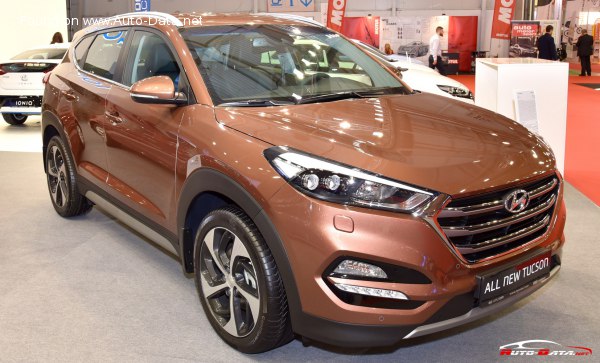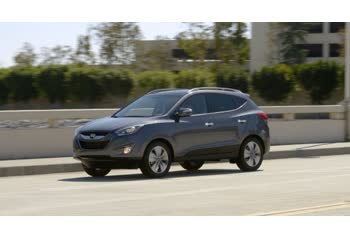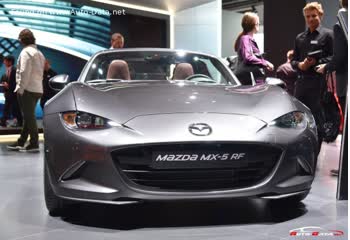Everything you need to know about specifications and performance - Hyundai Tucson 2015 - 2.0 GDI (164 Hp) AWD SHIFTRONIC

Overview:
What is the engine capacity of a Hyundai Tucson 2015?
The engine capacity of the Hyundai Tucson 2015 is 1999 cm.
Hyundai Tucson 2015 How many horsepower?
The engine power of the Hyundai Tucson 2015 is 164 Hp @ 6200 rpm..
What is the Hyundai Tucson 2015 engine?
Hyundai Tucson 2015 engine is Nu / G4NC. (Click to see other cars using the same engine)
How much gasoline does a Hyundai Tucson 2015 consume?
The Hyundai Tucson 2015 consumes 10.1 liters of gasoline per 100 km
General:
Brand: Hyundai
Model: Tucson
Generation: Tucson III
Modification (Engine): 2.0 GDI (164 Hp) AWD SHIFTRONIC
Start of production: April, 2015
End of production: 2018
Powertrain Architecture: Internal Combustion Engine
Body type:Sports Utility Vehicle (SUV)
Seats: 5
Doors: 5
Engine:
Power: 164 hp @ 6200 rpm.
Power per litre: 82 hp/l
Torque: 205 nm @ 4000 rpm.
Engine Model/Code:Nu / G4NC
Engine displacement: 1999 cm
Number of cylinders: 4
Engine configuration: Inline
Number of valves per cylinder: 4
Fuel injection system: Direct injection
Engine aspiration: Naturally aspirated Engine
Valvetrain: DOHC, D-CVVT
Engine oil capacity: 4 l
Coolant: 7.9 l
Engine layout: Front, Transverse
Cylinder Bore: 81 mm
Piston Stroke: 97 mm
Compression ratio: 11.5
Performance:
Fuel Type: Petrol (Gasoline)
Fuel consumption (economy) - urban: 11 l/100 km
Fuel consumption (economy) - extra urban: 9 l/100 km
Fuel consumption (economy) - urban (EPA): 11 l/100 km
Fuel consumption (economy) - extra urban (EPA): 9 l/100 km
Fuel consumption (economy) - combined (EPA): 10.1 l/100 km
Fuel consumption (economy) - combined: 10.1 l/100 km
Weight-to-power ratio: 9.7 kg/Hp, 103.6 Hp/tonne
Weight-to-torque ratio: 7.7 kg/Nm, 129.5 Nm/tonne
Space:
Kerb Weight: 1583-1634 kg
Max. weight: 2150 kg
Max. roof load: 100 kg
Max load: 516-567 kg
Trunk (boot) space - maximum: 1754 l
Trunk (boot) space - minimum: 877 l
Permitted trailer load with brakes (12%): 680 kg
Fuel tank capacity: 62 l
Permitted trailer load without brakes: 454 kg
dimensions:
Length: 4475 mm
Width: 1850 mm
Height: 1650 mm
wheelbase: 2670 mm
Front track: 1608 mm
Rear (Back) track: 1620 mm
Front overhang: 910 mm
Rear overhang: 895 mm
Ride height (ground clearance): 162 mm
Minimum turning circle (turning diameter): 10.6 m
Approach angle: 17.2°
Departure angle: 23.9°
Powertrain, Suspension and Brakes:
Drivetrain Architecture: The Internal combustion Engine (ICE) drives the front wheels permanently, and the rear wheels are driven through an electrically or mechanically operated clutch if necessary.
Drive wheel: All wheel drive (4x4)
Number of gears and type of gearbox: 6 gears, automatic transmission SHIFTRONIC
Front brakes: Ventilated discs, 305x25 mm
Rear brakes: Disc, 302x10 mm
Assisting systems: ABS (Anti-lock braking system)
Steering type: Steering rack and pinion
Power steering: Electric Steering
Tires size: 225/60 R17
Wheel rims size: 7J x 17
Front suspension: Independent, type McPherson with coil Spring and anti-roll bar
Rear suspension: Independent multi-link Spring suspension with stabilizer
See also

Other generation.
Its production began in 2013 until 2015

Same engine. (Nu / G4NC).
Its production began in 2013 until 2015

Same engine. (Nu / G4NC).
Its production began in 2017 until 2018

Same production year and almost the same engine capacity.
Its production began in 2015 until 2018
Write a comment